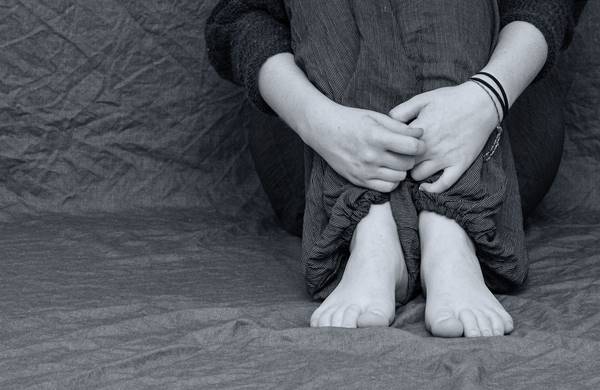Panic attacks can be overwhelming and distressing experiences, characterized by intense fear, rapid heartbeat, shortness of breath, and a sense of impending doom. These episodes often occur unexpectedly and can significantly disrupt daily life. While panic attacks are commonly associated with anxiety disorders, they can affect anyone at any time. In search of relief, many individuals turn to various coping strategies, one of which is meditation.

Meditation is a practice that involves focusing the mind on the present moment while promoting relaxation and inner peace. This subtopic explores the connection between panic attacks and meditation, delving into how meditation techniques can help manage symptoms, reduce anxiety levels, and promote overall well-being for those struggling with panic attacks.
What are Panic Attacks?
Panic attacks are intense episodes of sudden fear or anxiety that can be overwhelming and debilitating. During a panic attack, individuals may experience a range of distressing symptoms, including accelerated heart rate, chest pain, shortness of breath, dizziness, trembling, sweating, and a sense of impending doom.
These attacks typically occur suddenly and without any apparent trigger or warning. Panic attacks can be particularly distressing as they often generate a strong fear of losing control or dying.
They can disrupt daily life activities and lead to avoidance behaviors aimed at preventing future attacks. Understanding the nature of panic attacks is essential for developing effective strategies to manage and alleviate their impact on mental well-being.
The Benefits of Meditation for Panic Attacks
Meditation has emerged as a powerful tool for managing panic attacks, offering numerous benefits to those seeking relief from this debilitating condition. By practicing meditation regularly, individuals can develop a heightened sense of self-awareness, enabling them to recognize the early signs of panic and take appropriate action.
Through deep breathing exercises and focused attention, meditation cultivates a state of relaxation and tranquility that counteracts the intense anxiety associated with panic attacks.Moreover, regular meditation enhances emotional resilience and reduces overall stress levels, creating a foundation of calmness that can prevent panic attacks from occurring in the first place.
By incorporating meditation into their daily routine, individuals with panic disorder can effectively manage their symptoms and regain control over their lives.
How to Prepare for a Meditation Session
Preparing for a meditation session can greatly enhance the effectiveness of your practice, especially when dealing with panic attacks.
Find a quiet and comfortable space where you won’t be disturbed, ensuring you have enough time to focus solely on your meditation.
Create a calming atmosphere by dimming the lights or lighting candles, and play soft instrumental music if it helps you relax.
Sit in a comfortable position, whether on a cushion or chair, with your back straight and shoulders relaxed.
Take a few deep breaths to center yourself before beginning the meditation.
Consider using essential oils or incense to create an aromatic environment that promotes relaxation.
Lastly, remind yourself that this dedicated time is for self-care and healing.
Step-By-Step Guide to Meditating During a Panic Attack
1. Acknowledge the panic: Recognize that you are experiencing a panic attack and accept it without judgment. Understand that it is a temporary state and will pass.
2. Find a quiet space: Seek a calm environment where you can sit comfortably and won’t be disturbed.
3. Focus on your breath: Close your eyes and bring your attention to your breath. Take slow, deep breaths, counting to four as you inhale and exhale.
4. Observe your sensations: Pay attention to the physical sensations in your body without trying to change them. Notice any tension or discomfort, allowing them to exist without resistance.
Additional Techniques to Manage Panic Attacks through Meditation
In addition to the basic meditation practices, there are several effective techniques that can be employed specifically for managing panic attacks.
One such technique is focused breathing, which involves directing attention towards the breath and observing its natural rhythm. By consciously controlling and deepening each breath, individuals can activate their body’s relaxation response and alleviate panic symptoms.
Another technique is body scanning, where one systematically pays attention to different parts of the body, noticing any tension or discomfort and allowing it to dissolve through mindful awareness.
This method helps individuals develop a deeper understanding of their bodily sensations during panic attacks and promotes a sense of calmness. Additionally, visualization exercises can be used to create a mental image of a safe and serene place, providing comfort during moments of distress.
Combining Meditation with other Therapies for Effective Results
Incorporating meditation into a comprehensive treatment plan can significantly enhance the management of panic attacks. While meditation alone can be beneficial, combining it with other therapies can yield even more effective results. Cognitive – behavioral therapy (CBT), for instance, helps individuals identify and modify negative thought patterns associated with panic attacks. By integrating meditation practices into CBT sessions, patients learn to observe their thoughts without judgment, fostering a sense of detachment and reducing anxiety triggers.
Additionally, medication prescribed by a healthcare professional can help alleviate severe symptoms when used in conjunction with meditation techniques. By combining these approaches, individuals experiencing panic attacks can attain greater self-awareness, improved emotional regulation, and enhanced overall well-being.
Embracing Calmness and Overcoming Panic Attacks Through Meditation
In conclusion, embracing calmness and overcoming panic attacks through meditation can be a transformative journey towards reclaiming control over our minds and bodies. Panic attacks, with their overwhelming sensations of fear and anxiety, can be debilitating, but meditation offers a powerful tool to counteract these distressing experiences. By incorporating mindfulness techniques and deep breathing exercises into our daily routine, we can cultivate a state of inner peace and learn to respond to panic triggers in a more composed manner.
Through consistent practice, meditation helps us develop resilience, enabling us to navigate the turbulent waves of panic with grace and composure. Ultimately, by harnessing the power of meditation, we can create a sanctuary within ourselves where calmness prevails over panic, leading to a more fulfilling and balanced life.